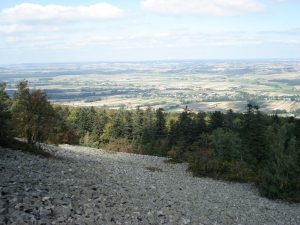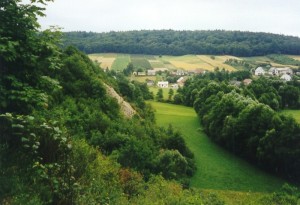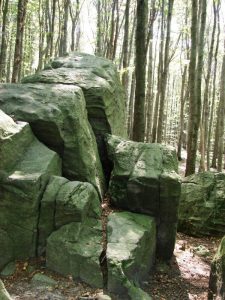
As far as geological structure and variety are concerned, the Świętokrzyski National Park, together with its Buffer Zone, constitutes one of the most interesting places not only in Poland but also in the entire Europe. It is here that we can observe geological deposits coming from a wide range of epochs (form 500 to 220 million years). Such diversity occurs in a relatively small area, where morphological differentiation is less visible than in other Polish mountains.

In the ŚNP, the Palaeozoic Era is the most widely represented; yet there are also geological deposits that originated in the Cainozoic Era (the Tertiary and the Quaternary), and on the small area, in the Mesozoic Era (the Triassic). Palaeozoic rocks, highly resistant to weathering, form the core of the highest Park ranges whereas Cainozoic rocks occur mainly in valleys and other lower-lying areas.

The ŚNP comprises the three highest ranges of the Świętokrzyskie Mountains. The main one (the Łysogóry range) is chiefly built of the Upper Cambrian quartzitic sandstone, and sandstone with interbeddings of slate and mudstone. The Klonowski and Pokrzywiański ranges are built of various kinds of the Early Devonian sandstone.

